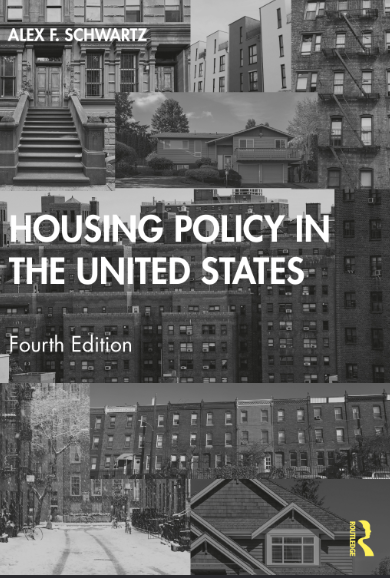موضوعات
آموزش و پرورش
ادبیات و زبان
پزشکی، دندانپزشکی و داروسازی
تاریخ و جغرافیا
داستان و رمان
دیگر
دین و فلسفه
روانشناسی
ریاضیات و آمار
سلامتی، تناسب اندام و رژیم غذایی
شیمی و پلیمر
علوم اجتماعی و حقوق
علوم زیستی و بیوتکنولوژی
فیزیک و نجوم
کامپیوتر و اینترنت
کتابهای کودکان و داستان
کسب و کار و اقتصاد
کشاورزی و دامپزشکی و غذا
معماری
مهندسی و فناوری
هنر و تئاتر
محصولات
New Challenges for Macroeconomic Policies Economic Growth, Sustainable Development, Fiscal and Monetary Policies - Original PDF
نویسندگان: خلاصه: P REFACE Macroeconomists’ efforts to investigate a series of new phenomena have been considerable over the past decade. Theories and methods hitherto considered to be the backbone of reasoning are gradually being called into question, because they do not provide answers to new puzzles. Why don’t current Phillips curves take into account financial inflation, that is, changes in the financial asset prices? Why should a central bank worry about controlling the real sector inflation when it is low? How should governments behave to reduce income and wealth inequalities? Why do macroeconomists continue to consider climate changes and countries’ health situation as exogenous to economies? Has industrial capitalism come of age? Why have natural interest rates been falling for at least two decades? What about helicopter money? Is it not an appropriate way to settle public debts? Isn’t it dangerous for governments to continue accumulating debt as they do today? Who will repay the debt? Are we going to reduce public debts as we did after the Second World War by using financial repression policies?Fundamentals_of_Computer_Graphics - Original PDF
نویسندگان: خلاصه: Preface This edition of Fundamentals of Computer Graphics includes substantial rewrites of the material on shading, light reflection, and path tracing, as well as many corrections throughout. This book now provides a better introduction to the tech- niques that go by the names of physics-based materials and physics-based ren- dering and are becoming predominant in actual practice. This material is now better integrated, and we think this book maps well to the way many instructors are organizing graphics courses at present. The organization of this book remains substantially similar to the fourth edi- tion. As we have revised this book over the years, we have endeavored to retain the informal, intuitive style of presentation that characterizes the earlier editions, while at the same time improving consistency, precision, and completeness. We hope the reader will find the result is an appealing platform for a variety of courses in computer graphics. About the Cover The cover image is from Tiger in the Water by J. W. Baker (brushed and air- brushed acrylic on canvas, 16” by 20”, www.jwbart.com). The subject of a tiger is a reference to a wonderful talk given by Alain Fournier (1943–2000) at a workshop at Cornell University in 1998. His talk was an evoca- tive verbal description of the movements of a tiger. He summarized his point: Even though modelling and rendering in computer graphics have been improved tremendously in the past 35 years, we are still not at the point where we can model automatically a tiger swimming in the river in all its glorious details. By automatically I mean in a way that does not need careful manual tweaking by an artist/expert. The bad news is that we have still a long way to go. The good news is that we have still a long way to goAN INTRODUCTION TO PERFORMANCE ANALYSIS OF SPORT - Original PDF
نویسندگان: خلاصه: This introductory chapter introduces sports performance analysis by asking the following questions: What? Why? Who? Where? When? and How? What is sports performance analysis? What are sports performance data and information? Why do we analyse sports performance? Who analyses sports performance? Where is sports performance analysis done? When is sports performance analysis done? How is sports perform- ance analysis done? The answers to these questions are not independent. The reason why sports performance analysis is done and who requires the information can dictate what information is required. The informa- tion required can in turn influence when it is needed and thus when sports performances should be analysed. The time at which information is needed and economic constraints dictate the methods and locations of sports performance analysis tasks. These questions will be answered in turn but readers can expect some necessary overlap between the answers.Epistemology Modalized by Kelly Becker - Original PDF
نویسندگان: خلاصه: 1 Introduction: Externalism and modalism Recent developments in epistemology, and in philosophy more generally, provide a promising foundation for an answer to a very old question: What is knowledge? The question stymied Plato in the Theaetetus, from which the traditional tripartite analysis of knowledge as justified true belief derives. It received fresh attention when Edmund Gettier showed that the three conditions of the traditional analysis were not jointly sufficient for knowledge. Subsequent attempts to repair the analysis of knowledge aimed (1) to amend the notion of justification to avoid the Gettier problem; (2) to add a fourth condition, for instance that there are no defeaters to one’s justification; or (3) to replace justification with some other condition that captures the requisite link between belief and truth constitutive of knowledge. 1 The uniqueness of the third strategy is not clearly defined because one could easily argue that, whatever the necessary link between belief and truth turns out to be, it just is justification. Nonetheless, I see myself as pursuing this approach because the very term ‘‘justification’’ is all too pregnant with associated notions that I believe are not essential to knowledge, and work- ing toward an account that explicitly involves justification as a necessary condition can lead us away from a proper understanding of knowledge. (A specific instance of this problem arises in Chapter 2.) Unencumbered by the requirement to explicate ‘‘justification,’’ we can inquire into the requisite belief-truth link constitutive of knowledge by testing proposals for that link against our intuitions concerning whether an agent actually knows in parti- cular cases. If we find that a correct or, at least, working account of that link does not capture the traditional conception of justification, then so be it. 2 Our topic, then, is propositional knowledge: knowledge that p for some arbitrary proposition p. I will not claim that all other forms of knowledge, for instance, knowledge by acquaintance, knowledge of one’s own phenom- enological states, and know-how, are reducible to propositional knowledge, and so do not intend to give an account of knowledge in general. This only slightly diminishes the importance of an account of propositional knowl- edge, since it is through sentences and the propositions they express that we think and talk about the world. It would be a significant advance in our understanding if we had a plausible theory of such knowledgeExperimental Design in Psychology Ninth Edition A Case Approach - Original PDF
نویسندگان: خلاصه: PART I Basic Principles in Experimental Design Some people dread taking the research methods course required for most psychology majors. I’m not sure of all the reasons why, but for many they fear the course. It often has a lab compo- nent; at some universities it is worth more credit than regular content courses. It simply often has the reputation of being “hard.” Instead, for a moment, consider that research methods is exciting! It provides you the tools to be able to conduct your own research. Finally, you are in charge and you can study what you want to know. You are explorer, scientist, puzzle solver. The frst half of this book (Part I) introduces to you the basics of scientifc inquiry, including what science is and how psychological science is a subset of it. We’ll discuss how to distinguish between facts, theories, and speculation and how each are useful for developing research questions. We’ll cover the basics of the scientifc method, the specifcs of experimental design, and a review of other non-experimental research methods (so you know when it is appropriate to choose the experiment). You will be given insight into how to fnd and read the literature in psychology as well as how to plan, design, and carry out research. We will also cover the rules and procedures designed to ensure sound, ethical, and meaningful research. Throughout this material, you’ll be exposed to examples from the psychological literature that will allow you to see concepts and principles as they play out in real research studies. And in one particu- lar chapter (Chapter 7) you’ll be prompted to critically analyze experimental designs that have conceptual or technical faws. Being sensitive to mistakes will help you avoid them yourselfHISTORY by John Higham, Leonard Krieger and Felix Gilbert - Original PDF
نویسندگان: خلاصه: From the time of the earliest English settlements in America, men and women of many sorts have been writing history. No one group has ever had a monopoly of the production of competent histories. Leadership in setting standards, however, has usually belonged to a particular class. Twice this leadership has changed hands. During the seventeenth century the best history was written by Puritan clergymen and by lay officials associated with them in creat- ing a new Zion in the wilderness. They wrote hastily, in whatever moments they could spare from active labors in behalf of the Puritan cause. Their history was a further extension of scripture: a chronicle of God's inscrutable will working within their own community. Clergymen long remained one of the most numerous species of his- torical writers, but their importance diminished as the church ceased to form the cultural center of American life. In the eighteenth century, patrician historians came to the fore. The growth of private wealth allowed a margin of leisure time for their studies. The weightiness of history appealed to the strong sense of social responsibility that characterized many American gentlemen; to them the historian was the ultimate human judge of men and events. They strove-without always succeeding, of course-to play a judicial role fairly and impartially, for the patrician, untrammeled by religious orthodoxy, prided himself on his independence of mind. He participated in a wide, transatlantic literary culture and wrote for an unspecialized, cultivated audience.1 During the greater part of the eighteenth and nineteenth centuries the patrician historian held the center of the stage, and in the works of Thomas Hutchinson, Charles Gayarre, Francis Parkman, Henry C. Lea, and others, his history reached a high level of accuracy and distinction.Housing Policy in the United States Fourth Editio - Original PDF
نویسندگان: خلاصه: 1 Introduction In its preamble to the 1949 Housing Act, Congress declared its goal of “a decent home in a suit- able living environment for every American family.” In the more than 60 years since this legisla- tion was passed, the federal government has helped fund the construction and rehabilitation of more than 5 million housing units for low-income households and provided rental vouchers to nearly 2 million additional families. Yet, the nation’s housing problems remain acute. In 2017, 44.7 million households lived in physically deficient housing, spent 30 percent or more of their income on housing, or were homeless (U.S. Census Bureau 2018; U.S. Department of Housing and Urban Development 2018). Put differently, about 113 million Americans—around 35 per- cent of the nation’s population and more than triple the 28.5 million lacking health insurance in 2017 (Berchick, Hood, & Barnett 2018)—confronted serious housing problems or had no housing at all.1 This book tells the story of how the United States has tried to address the nation’s housing problems. It looks at the primary policies and programs designed to make decent and affordable housing available to Americans of modest means. It examines the strengths and weaknesses of these policies and programs and the challenges that still remain. The book takes a broad view of housing policy, focusing not only on specific housing subsidy programs, such as public housing, but also on the federal income tax code and regulations affecting mortgage lending, land use decisions, real estate transactions, and other activities integral to the housing market. Some of these broader aspects of housing policy provide financial incentives for investments in affordable housing, others attempt to make housing available to low-income and minority households and communities by penalizing discriminatory practices and through other regulatory interventions. Put simply, then, this book is about policies and programs designed to help low-income and other disadvantaged individuals and households access decent and affordable housing. It examines programs and policies that subsidize housing for low-income households or that attempt to break down institutional barriers, such as discriminatory practices in the real estate industry that impede access to housing. The book is intended to be a general overview of housing policy. It is beyond its scope to delve deeply into programmatic details or to cover all aspects of the field in equal depth. The focus is on federal and, to a lesser degree, state and local programs and policies that subsidize housing for low-income households or otherwise attempt to make housing accessible to this population. Much less attention is given to policies concerned with the physical aspects of housing, such as design standards and building regulations—except when they are explicitly employed to promote affordable housing. The book does not examine in detail the operation of housing markets or pro- vide a comprehensive legislative history of housing policy.DISCOURSE ANALYSIS OF LANGUAGING AND LITERACY EVENTS IN EDUCATIONAL SETTINGS - Original PDF
نویسندگان: خلاصه: This book provides a comprehensive introduction to the use of microethno- graphic discourse analysis for researching, theorizing, and reconceptualizing the uses of language and literacy in educational settings. The authors apply an ethnographic perspective to discourse analysis to emphasize how teachers and students use spoken and written language to construct knowledge, opportunities for learning, and social relationships. The authors demonstrate how micro- ethnographic discourse analysis at different levels of scale can provide deeper understandings into the nuanced, complex social interactions and relationships that exist in and across educational contexts, including meaning-making, lit- eracy practices, power relations, and the social construction of personhood. Each chapter offers philosophically and theoretically grounded principles for using microethnographic discourse analysis and example cases that reflect the principles presented. Ideal for researchers, teacher educators, and teachers, this essential text on discourse analysis, languaging, and literacy provides a ground- ing to further examine critical questions challenging educators.Economic Crime by Mark Button, Branislav Hock and David Shepherd - Original PDF
نویسندگان: خلاصه: In the midst of the summer of 2021, Boris Johnson’s government in the UK published a crime plan (Home Office, 2021). A few days earlier the Office for National Statistics (ONS) had released the latest crime statistics from the Crime Survey for England and Wales (CSEW). This had shown a 36% increase in fraud and computer misuse offences, which now accounted for the clear majority of crimes – 6.3 million of the 11.1 million estimated crimes (ONS, 2021). One would have expected a flourish of media interest and comment on the plan, particularly as it contained a whole chapter on fraud and online offences, on what the impact on fraud might be. The media, however, were much more interested in other aspects of the plan: “Boris Johnson pledges to target crime and anti-social behaviour” – BBC News “Freed burglars to wear 24-hour tags under Prime Minister’s Crime Crackdown” – Telegraph “Thieves tagged 24-hours a day and crooks forced to clean streets in crime crackdown” – Expressآیا کتاب مورد نظر هنوز بر روی سایت قرار نگرفته است؟ جای نگرانی نیست! کافی است بر روی گزینه سفارش کتاب کلیک کرده و درخواست خود را ثبت کنید. در کمتر از چند ساعت کتاب شما را آماده خواهیم کرد.









